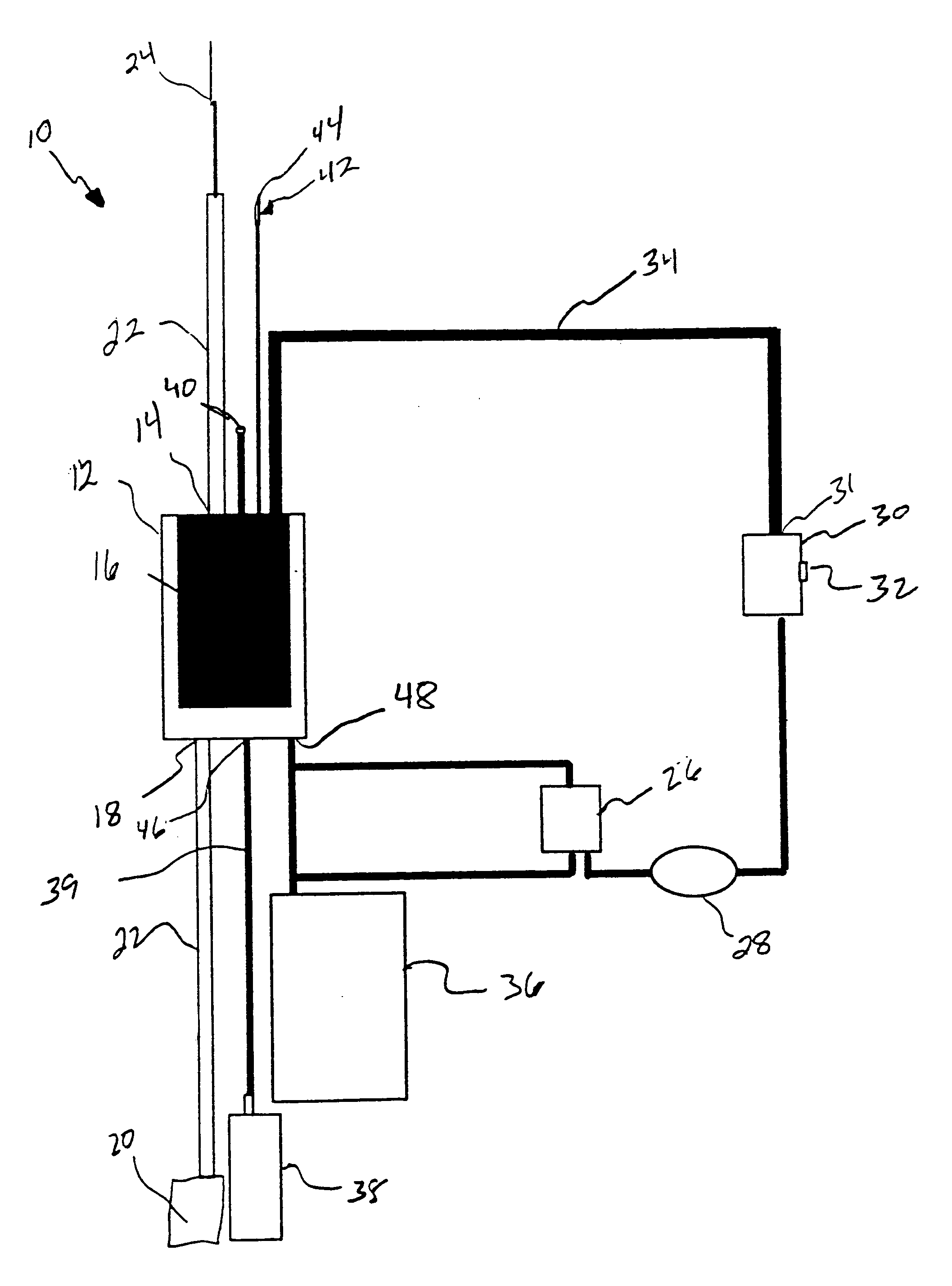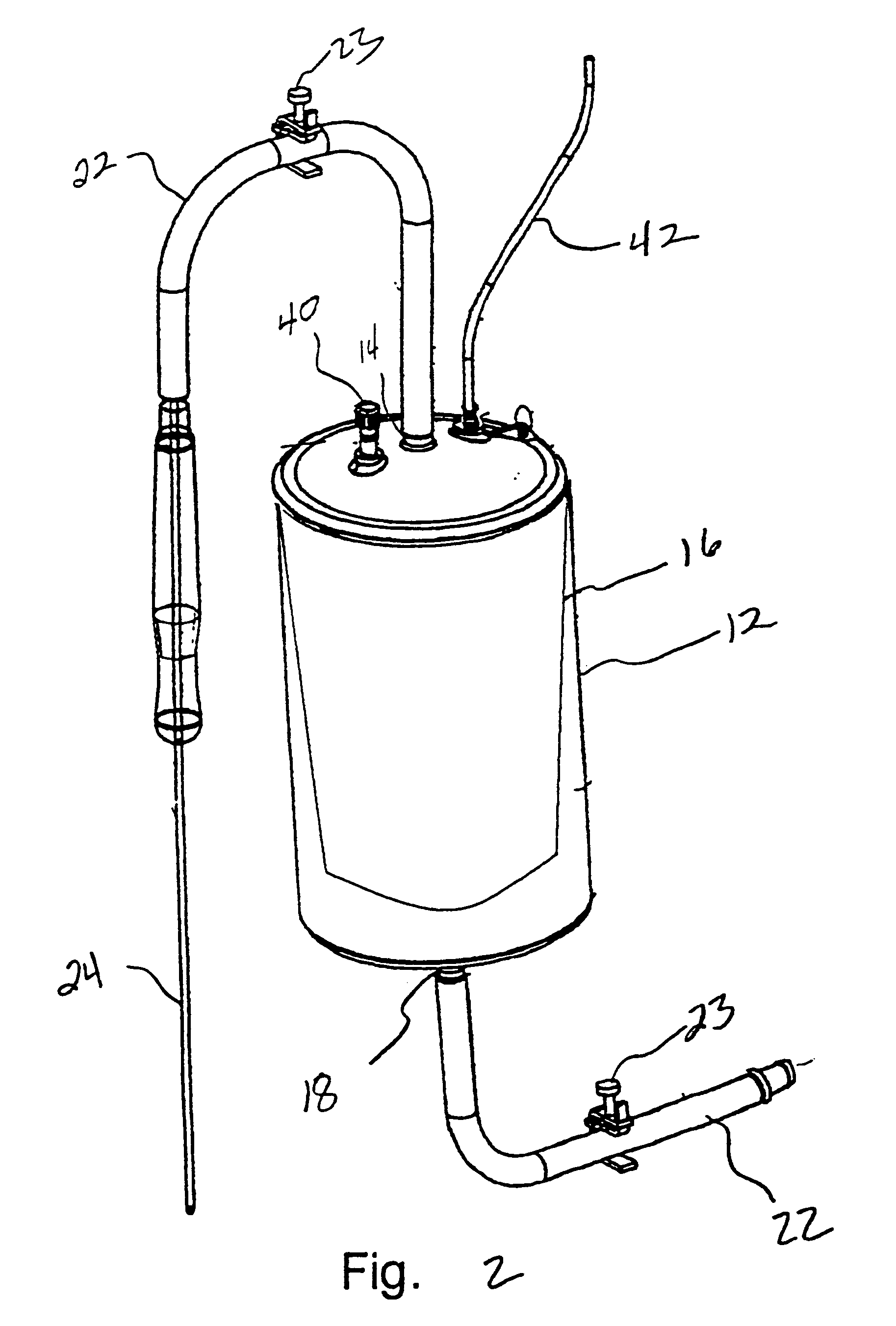Systems and methods for treating patients with processed lipoaspirate cells
a technology of lipoaspirate cells and treatment methods, applied in animal cells, peptide/protein ingredients, unknown materials, etc., can solve the problems of complex cell culture steps, escs have theoretic limitations to their use, and the cost of extracting stem cells from skin
- Summary
- Abstract
- Description
- Claims
- Application Information
AI Technical Summary
Benefits of technology
Problems solved by technology
Method used
Image
Examples
example 1
Autologous Fat Transfer
[0107] Autologous fat transfer is a relatively common cosmetic and structural procedure involving the harvest of adipose tissue (fat) from one location and reimplantation in another location within the same individual (Coleman, S. R. (1995). "Long-term survival of fat transplants: controlled demonstrations." Aesthetic Plast Surg 19(5): 421-5; Coleman, S. R. (2001). "Structural fat grafts: the ideal filler?" Clin Plast Surg 28(1): 111-9; Coleman, W. P. 3rd (1991). "Autologous fat transplantation." Plast Reconstr Surg 88(4): 736.). However, as indicated above, this procedure is frequently compromised by inconsistent engraftment such that the implanted material is fully or partially resorbed or is replaced by scar tissue (Eremia, S. and N. Newman (2000). "Long-term follow-up after autologous fat grafting: analysis of results from 116 patients followed at least 12 months after receiving the last of a minimum of two treatments." Dermatol Surg 26(12) : 1150-8). At l...
example 2
[0111] Liver damage induced by intraperitoneal injection with allyl alcohol is a common model of periportal acute liver injury (Lee, J. H., Z. Ilic, et al. (1996). "Cell kinetics of repair after allyl alcohol-induced liver necrosis in mice." Int J Exp Pathol 77(2): 63-72; Werlich, T., K. J. Stiller, et al. (1999). "Experimental studies on the stem cell concept of liver regeneration. II." Exp Toxicol Pathol 51(1): 93-8.; Yin, L., D. Lynch, et al. (1999). "Participation of different cell types in the restitutive response of the rat liver to periportal injury induced by allyl alcohol." J Hepatol 31(3): 497-507). This model has been used to demonstrate the presence of a population of stem cells that is critical to liver regeneration (Yavorkovsky, L., E. Lai, et al. (1995). "Participation of small intraportal stem cells in the restitutive response of the liver to periportal necrosis induced by allyl alcohol." Hepatology 21(6): 1702-12; Werlich, T., K. J. Stiller, et al....
example 3
Acute Heart Damage
[0113] Acute myocardial infarct (heart attack) results in ischemic injury to the myocardium. Tissue damage can be minimized by reperfusion of the damaged tissue and by regeneration of myocardial tissue (Murry, C. E., R. W. Wiseman, et al. (1996). "Skeletal myoblast transplantation for repair of myocardial necrosis." J Clin Invest 98(11): 2512-23 ; Orlic, D., J. Kajstura, et al. (2001). "Bone marrow cells regenerate infarcted myocardium." Nature 410(6829): 701-5; Rajnoch, C., J. C. Chachques, et al. (2001). "Cellular therapy reverses myocardial dysfunction." J Thorac Cardiovasc Surg 121(5): 871-8; Strauer, B. E., M. Brehm, et al. (2002). "Repair of infarcted myocardium by autologous intracoronary mononuclear bone marrow cell transplantation in humans." Circulation 106(15): 1913-8). The bedside approach described in this disclosure would provide a potentially superior source of regenerative cells in that cells could be provided in greater numbers and purity without t...
PUM
| Property | Measurement | Unit |
|---|---|---|
| diameter | aaaaa | aaaaa |
| diameters | aaaaa | aaaaa |
| diameters | aaaaa | aaaaa |
Abstract
Description
Claims
Application Information
 Login to View More
Login to View More - R&D
- Intellectual Property
- Life Sciences
- Materials
- Tech Scout
- Unparalleled Data Quality
- Higher Quality Content
- 60% Fewer Hallucinations
Browse by: Latest US Patents, China's latest patents, Technical Efficacy Thesaurus, Application Domain, Technology Topic, Popular Technical Reports.
© 2025 PatSnap. All rights reserved.Legal|Privacy policy|Modern Slavery Act Transparency Statement|Sitemap|About US| Contact US: help@patsnap.com



